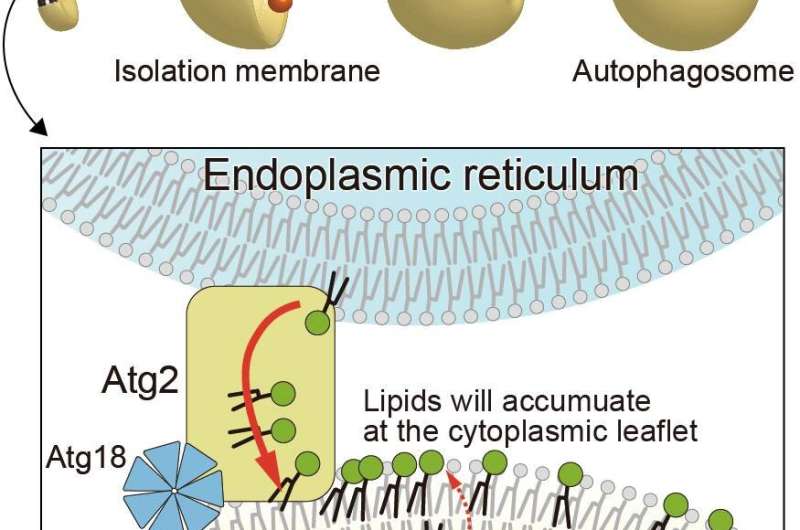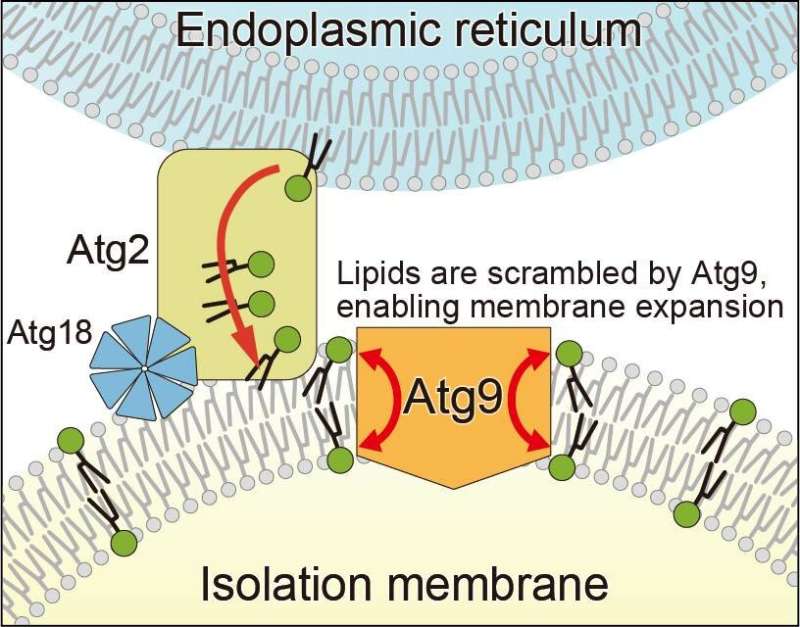Revealing the identity of the last unknown protein of autophagy

Dr. Nobuo Noda and Dr. Kazuaki Matoba at the Institute of Microbial Chemistry discovered that Atg9, one of the proteins that function to mediate autophagy, has phospholipid-translocation activity (the lipid scramblase activity) between the two layers of the lipid bilayer and elucidated that the protein's activity brings about autophagosome membrane expansion.
Autophagosome formation is an essential step in determining the target of degradation in autophagy, which is one of the mechanisms of intracellular protein degradation. Although this research group has previously revealed that Atg2, a lipid transfer protein, transfers phospholipids from the endoplasmic reticulum, the manner in which the membrane is expanded using the transported phospholipids remains unknown.
The research group demonstrated that yeast and human Atg9, a membrane protein of unknown function, exhibits lipid scramblase activity through in vitro experiments. Moreover, as a result of examining the three-dimensional structure of yeast Atg9 by cryo-electron microscopy, they found that Atg9 has pores connecting the two membrane leaflets of the lipid bilayer. They also found that the mutations to the pore-forming amino acids resulted in losing the lipid scramblase activity of Atg9 in vitro and inhibited the autophagosome formation in yeast. Consequently, they revealed a brand-new mechanism that Atg9 is a novel scramblase; in conjunction with Atg2, a lipid transfer protein, these two proteins act to form autophagosomes.
The elucidation of the mechanisms of isolation membrane expansion, which have been a long-standing issue in the field of autophagy holds promise in accelerating research that will contribute to a complete understanding of the molecular mechanisms of autophagosome formation. It is also expected to promote the research and development of treating and preventing various diseases through the artificial control of autophagy due to deepening our understanding of autophagosome formation mechanisms.

More information: Kazuaki Matoba et al. Atg9 is a lipid scramblase that mediates autophagosomal membrane expansion, Nature Structural & Molecular Biology (2020). DOI: 10.1038/s41594-020-00518-w
Journal information: Nature Structural & Molecular Biology
Provided by Japan Science and Technology Agency


















